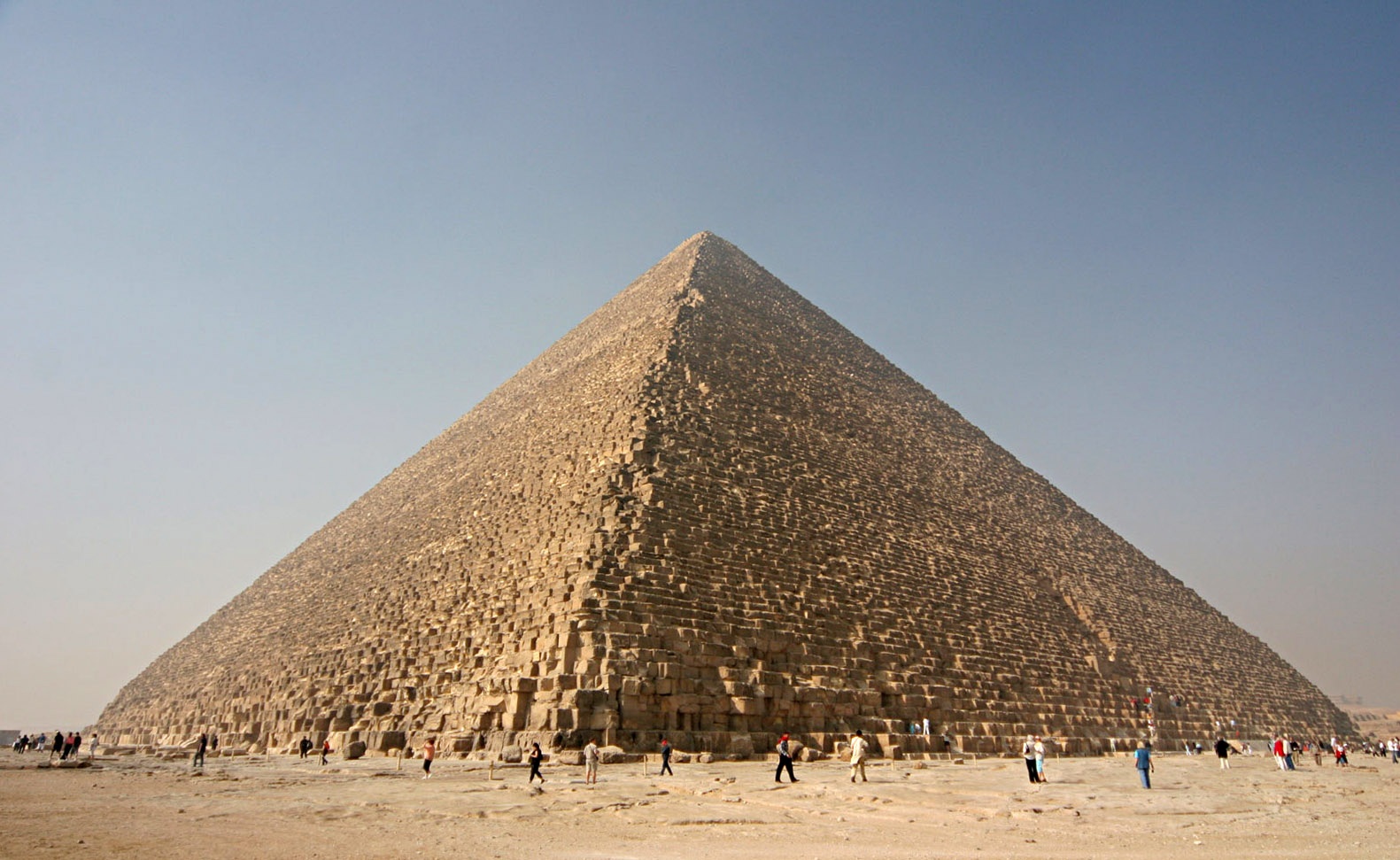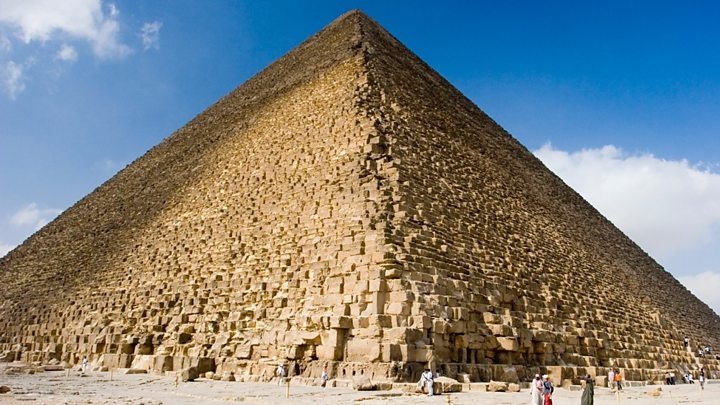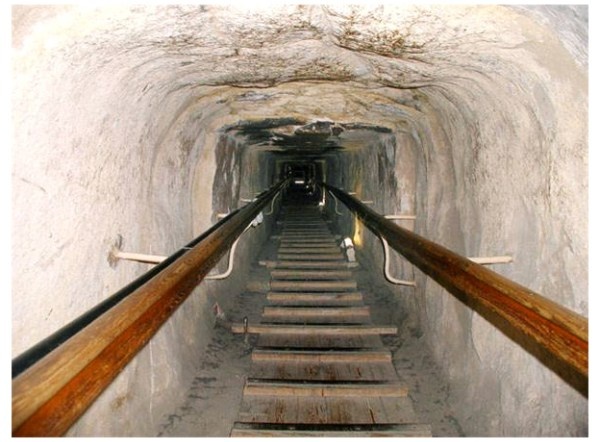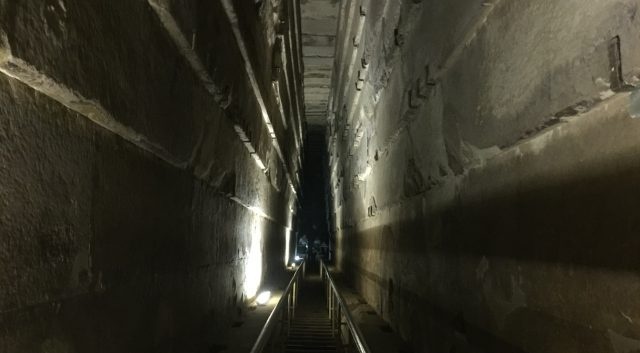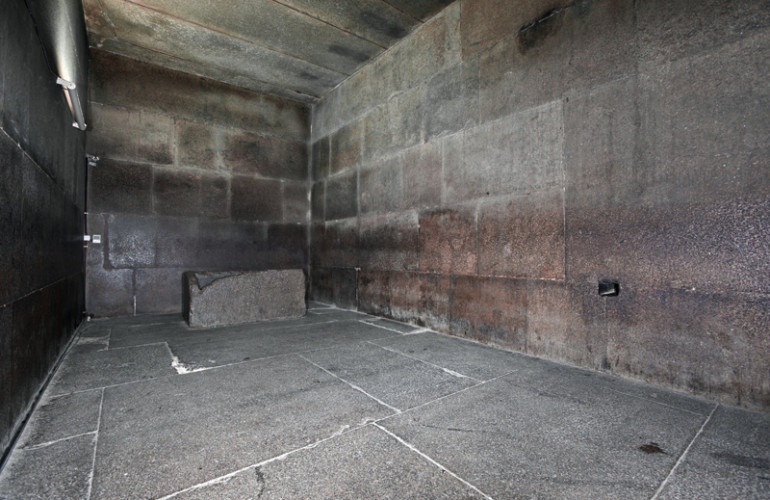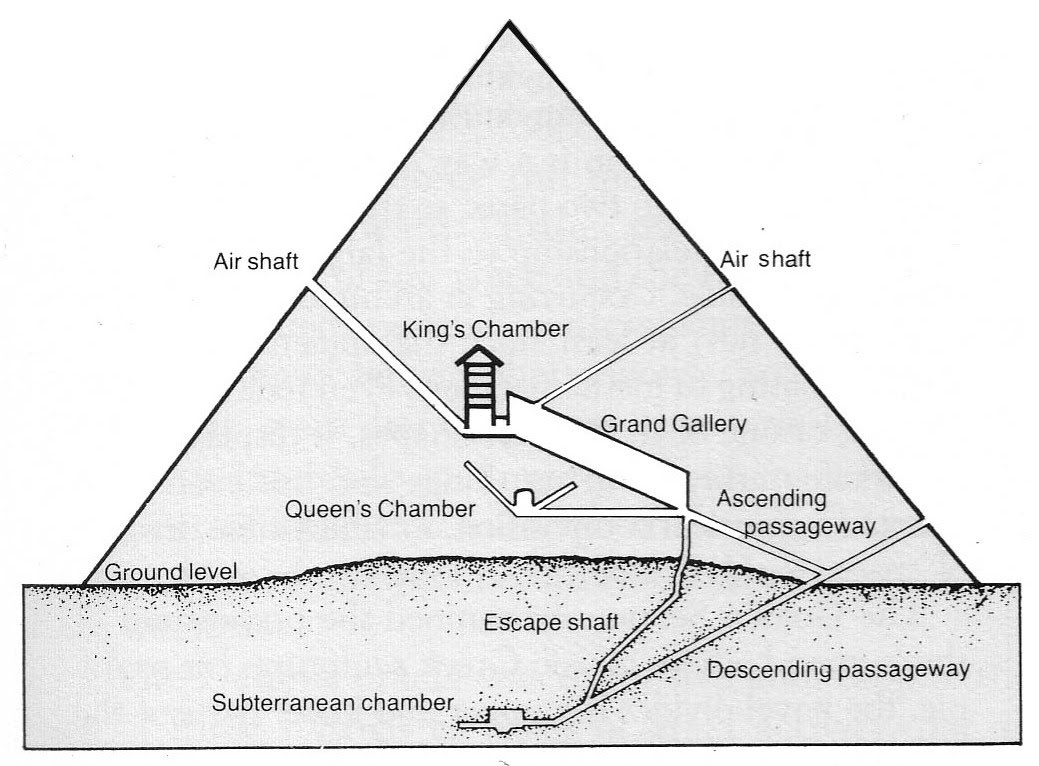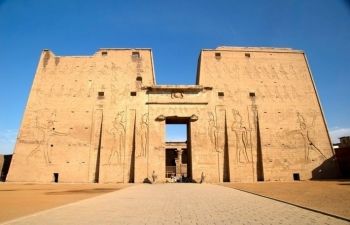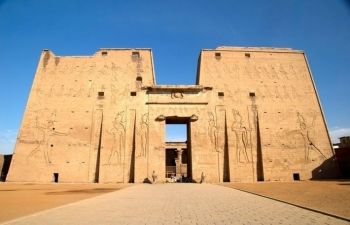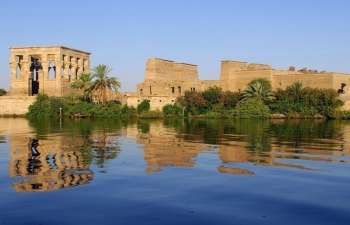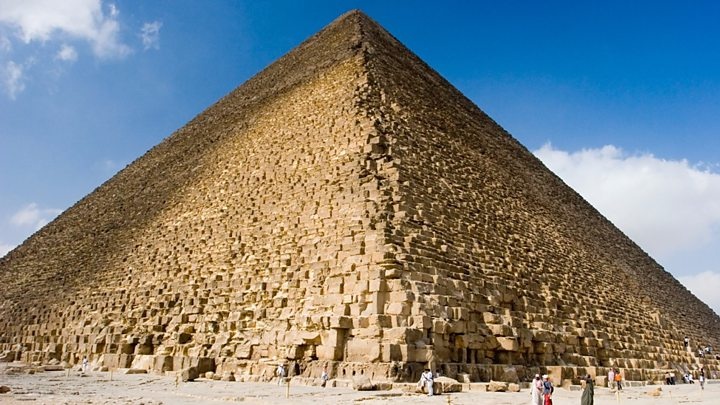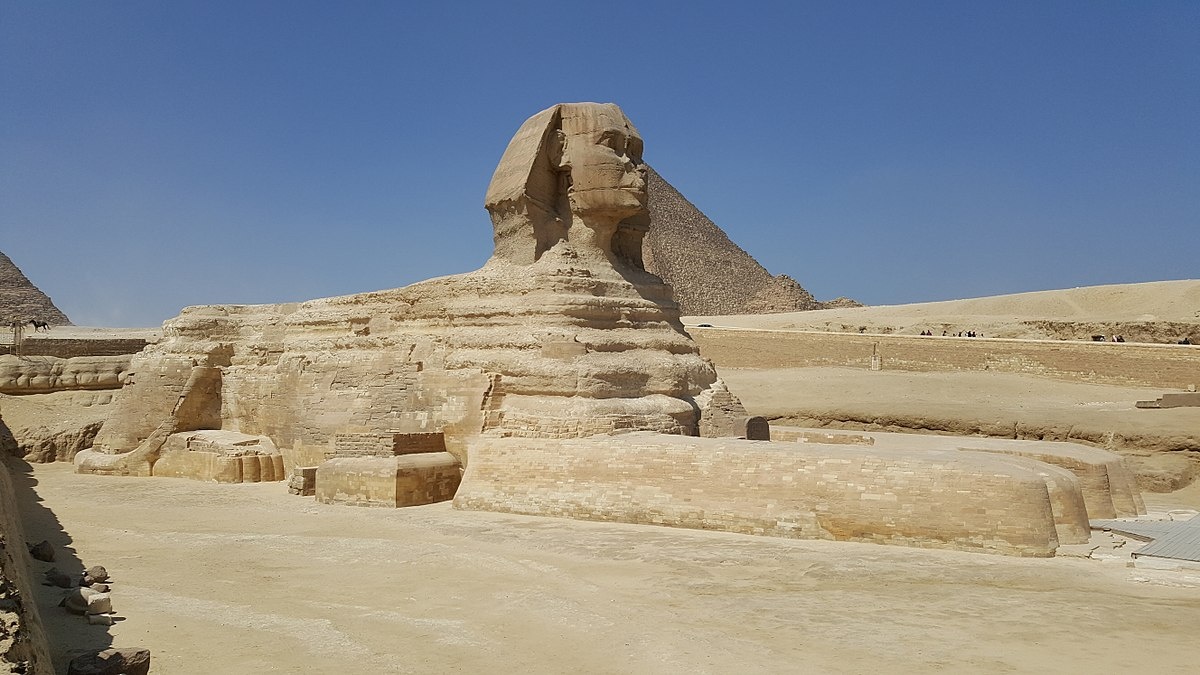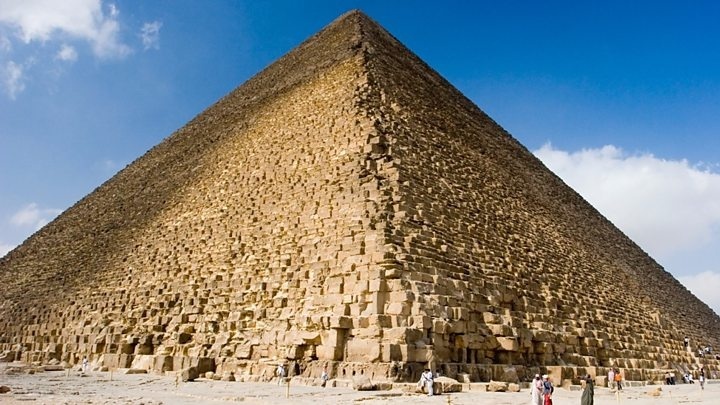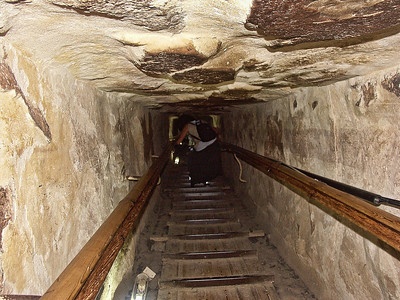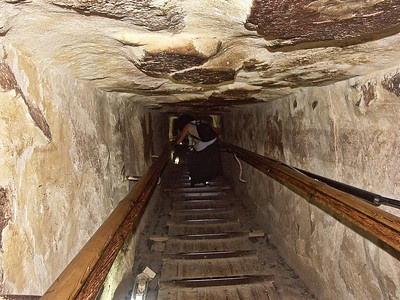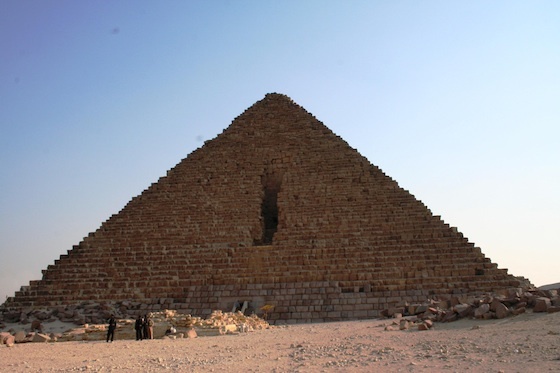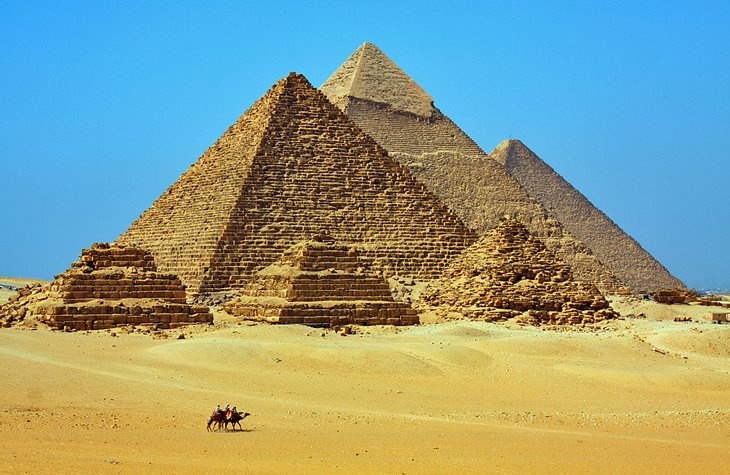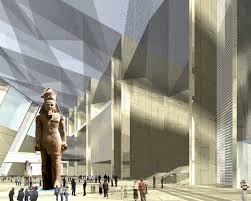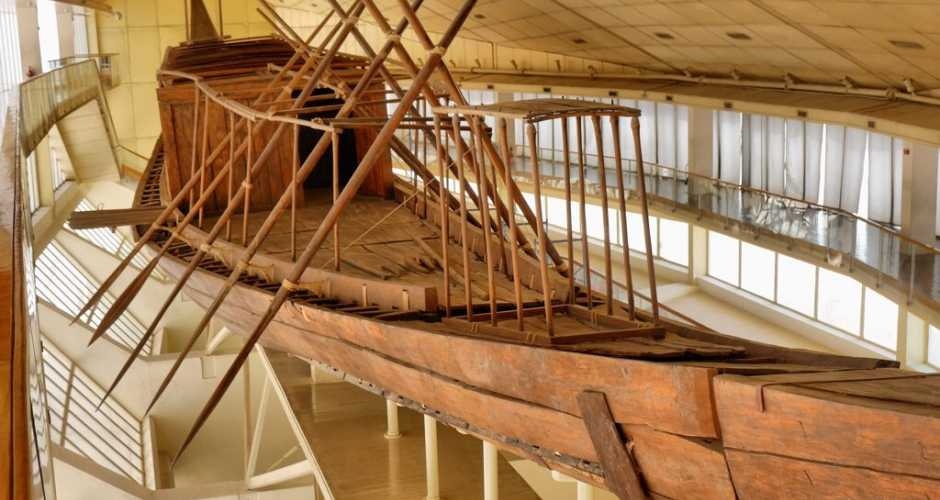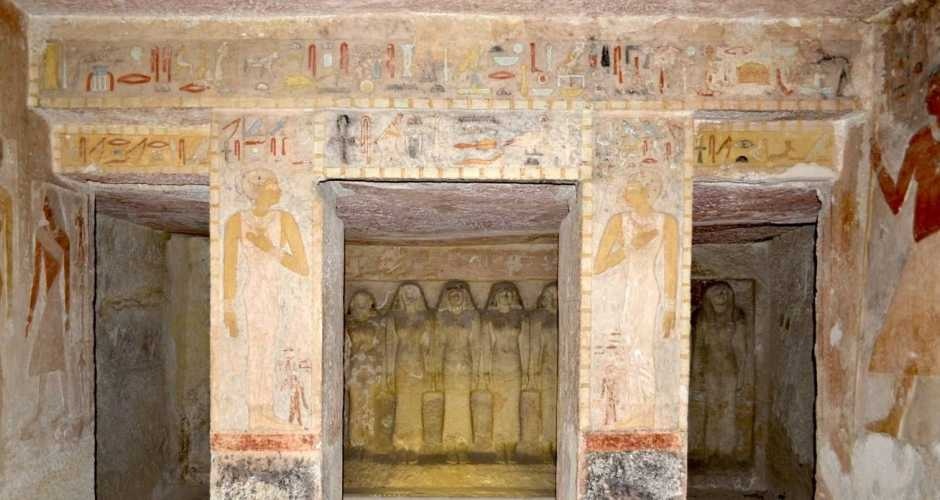De piramide van Cheops
Egyptologen geloven dat de piramide werd gebouwd als een tombe voor de vierde dynastie, de Egyptische farao Khufu (vaak gehelleniseerd als "Cheops") en werd gebouwd over een periode van 20 jaar. Khufu's vizier, Hemiunu (ook wel Hemon genoemd) wordt door sommigen beschouwd als de architect van de Grote Piramide.
De piramide van Cheops
This magnificent funerary complex, designed and executed by the architect Hemiunu, has inspired countless pseudo-scientific theories as to the reasons for its dimensions. However, the dimensions are probably the best solutions to construction problems. The angle of inclination of the sides (51°52'), permits an equal distribution of weight. Now rising 137 meters (450 feet) high, the structure originally stood 140 meters (460 feet). Its sides measured 230 meters (755 feet). The pyramid appears to be intact, although its surface layer of fine Tura limestone was stripped by invaders for use as construction material. Like the exterior, the interior is structured in grand style. The project was modified three times in the course of its construction before the builders arrived at a definitive form. The first plan included a 'Queen's Chamber', which was excavated from the center on the apex line but left unfinished. Then followed various alterations for unknown reasons, such as the excavation of a room for the sarcophagus, much higher and slightly askew to the apex axis. It is reached by crossing a grand gallery with walls notched at the top, so that roofing blocks rested individually against the wall. (This prevented the weight from resting on one spot.) The granite funerary chamber
contains an unadorned, lidless sarcophagus also in pure granite slabs, and is protected from the weight of masonry by five relieving spaces. The actual entrance of the pyramid, 15 meters (49 feet) above the original entry, winds across a narrow tunnel excavated by thieves and looters of the tombs. Of the temple annexed at the eastern side of the pyramid, only the basalt flooring remains, though its actual layout and plan have been reconstructed. The processional ramp with its once richly-decorated walls has also been largely destroyed. Three small pyramids along the eastern side probably belonged to queens and princesses. Another important archaeological find east of the pyramid of Cheops , uncovered in 1925, was the tomb of Queen Hetepheres, wife of Snefru and mother of Cheops . The richly glittering furniture recovered from the site is now on exhibition at the Museum of Cairo . A most exceptional discovery in 1954, was that of two boats in Egyptian sycamore and cedar from Lebanon. The funerary vessels had been disassembled and carefully deposited in separate air-tight pits along the pyramid's southern side. One of the vessels has been fully reconstructed and is housed in a museum near where it was found. As in other pyramids, air-tight pits for sacred funeral vessels may be found in the eastern face of the pyramid or on the side of the ramp. The significance of these vessels is unknown. They were believed at first to be the solar bark of Cheops , thus equating the deceased Pharaoh with the sun god Ra. Recent studies, however, show that the boats were used by the priests in the. funerary rites of Cheops to make pilgrimages from one site to another.
